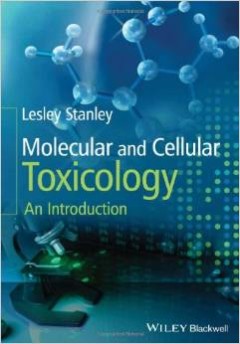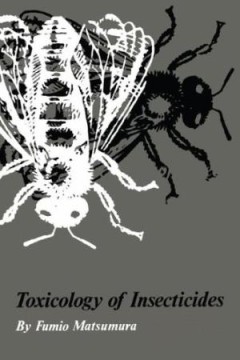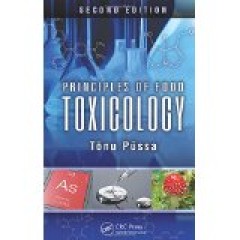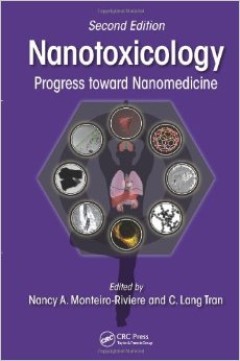Filter by

Cytotoxicity For Zn-Sr Cosubstituted Hydroxypatite
- Edition
- -
- ISBN/ISSN
- Intern 018-2024
- Collation
- x, 24 p. : ill. ; 30 cm.
- Series Title
- -
- Call Number
- BM-005
- Edition
- -
- ISBN/ISSN
- Intern 018-2024
- Collation
- x, 24 p. : ill. ; 30 cm.
- Series Title
- -
- Call Number
- BM-005

The in Vitro Investigation of Methanolic Carica Papaya Leaf Extract as an Ant…
Pseudomonas aeruginosa is a significant opportunistic pathogen causing healthcare-associated infections (HAI)worldwide, its ability to form biofilms contributes to antibiotic resistance, resulting in the increased difficulty for treatment, thus finding a new therapeutic approach is crucial.
- Edition
- -
- ISBN/ISSN
- -
- Collation
- -
- Series Title
- -
- Call Number
- BM 24-019

Assessing The Cytotoxic Effect of Capsicum annuum extract on Cervical Cancer
Capsicum annuum, or chili pepper, is known from traditional medicine to have anti-tumor properties. Recent researches isolated to compound responsible to be Capsaicin, with few researches opposing this notion. Since there are some disagreements as to the validity of this claim, it is important that further tests need to be conducted to prove or disprove the point. Hence, this thesis aimed to…
- Edition
- -
- ISBN/ISSN
- -
- Collation
- -
- Series Title
- -
- Call Number
- BM 24-003

Investigation of the Antifungal and Anti-inflammatory Properties of Alpinian …
Candida albicans is a yeast that resides on the human skin, however it can become an opportunistic pathogen when the immune system is compromised or there are imbalances in the microenvironment. This microorganism can cause candidiasis which is able to cause high mortality rates in especially immunocompromised patients. Treating this infection is highly difficult due to similarities in stru…
- Edition
- -
- ISBN/ISSN
- -
- Collation
- -
- Series Title
- -
- Call Number
- BM 24-017

Evaluation of Delayed and Reversible Toxicity of Repeated Fennel (Foeniculum …
This subchronic toxicity study assessed the delayed toxicity and reversibility of fennel extract in male and female mice. To ascertain any delayed toxicity and potential for recovery, a separate satellite group received oral doses of fennel extract at a dose of 1000 mg/kg/day of body weight for a duration of 90 days, followed by 28-days with no treatment. There were no abnormalities observed in…
- Edition
- -
- ISBN/ISSN
- -
- Collation
- -
- Series Title
- -
- Call Number
- PHA 23-013

Biochemical Assay in Mus musculus as Subchronic Toxicity Study Using Foenicul…
Foeniculum vulgare or known as adas in Indonesia is a medicinal plant that belongs to the umbelliferae family. It has a lot of pharmacological properties such as antiviral, antimicrobial, antioxidant, anti-inflammatory, anti-anxiety, gastro-protective, estrogenic-like, cardiovascular, lipid-lowering, anti-mutagenic, anti-diabetic, anti-cancer activity, hepatoprotective, and memory-protective ch…
- Edition
- -
- ISBN/ISSN
- -
- Collation
- -
- Series Title
- -
- Call Number
- PHA 23-006

Biochemical Analysis on Subchronic Toxicity Study of F. vulgare Extract in Vivo
F. vulgare is a perennial herb that has been traditionally used as medicine for a variety of ailments. It has also been used as a medication due to its antimicrobial, antifungal, and antiviral properties. Previous studies have highlighted issues associated with the poor quality of therapeutic herbal products commercially available, thus a standardization for safety and toxicity profiling of her…
- Edition
- -
- ISBN/ISSN
- -
- Collation
- -
- Series Title
- -
- Call Number
- PHA 23-002

Oncolytic Virus Treatment Strategies Against Liver Cancer
Hepatocellular carcinoma (HCC) poses a significant challenge in clinical management due to late-stage diagnosis and limited curative interventions. The imperative to develop more efficacious therapeutic approaches for HCC underscores the exploration of oncolytic virotherapy, an innovative treatment modality exhibiting promising antitumor properties. Among potential oncolytic vectors, the measle…
- Edition
- -
- ISBN/ISSN
- -
- Collation
- -
- Series Title
- -
- Call Number
- EP BM-009

Study of Teratogenic Effect of Herbal Medicines Marketed in Indonesia Using Z…
With the rising popularity, herbal medicine has increasing consumption with a minimum 80% worldwide population or use it as their primary medicine depending on their culture and location. The usage of herbal medicine during pregnancy in Indonesia was reported to be 60% in 2020 due to an attempt to alleviate common side effects of pregnancy. However, herbal medicine has not been regulated en…
- Edition
- -
- ISBN/ISSN
- -
- Collation
- -
- Series Title
- -
- Call Number
- PHA 23-007

Investigating Isoflavone-adaptation Synthetic Compounds For Treating Skin Inf…
Psoriasis is an autoimmune skin disorder that has impacted the global population from children to adults. Psoriasis is characterized by unusual proliferation of keratinocytes, leading to itchy, bleeding, scaly, and red lesions due to increased immune system activity. Existing topical treatments often result in side effects, emphasizing the necessity for advanced drug discovery in managing psori…
- Edition
- -
- ISBN/ISSN
- -
- Collation
- -
- Series Title
- -
- Call Number
- EP BM-017

Subchronic toxicity Study of Foeniculum Vulgare extract in Mice (Mus Musculus)
Herbal medicines are often used as therapeutic agents and contains one or multiple active compounds such as alkaloids, phenolics, and flavonoids. Flavonoids are natural compounds which are essential for pharmacological activity of plants and are known for antioxidant, antibacterial, and antiviral properties. As antiviral properties, Juglanin and quercetin are known to inhibit COVID-19 repli…
- Edition
- -
- ISBN/ISSN
- -
- Collation
- -
- Series Title
- -
- Call Number
- BM 23-013

Cytotoxicity Test for Zn-Sr Cosubstituted Hydroxyapatite
The current report states the author’s experience as an intern at Badan Riset Inovasi dan Nasional (BRIN), under the department of Pusat Riset Material Maju (PRMM). The goal of this internship was to create a systematic review that discusses the cytotoxic effects of hydroxyapatite cosubstituted with zinc (Zn) and strontium (Sr) on osteoblastic cell lines, with the goal of possibly using this …
- Edition
- -
- ISBN/ISSN
- -
- Collation
- -
- Series Title
- -
- Call Number
- BM 23-005

Cytotoxicity test for Hydroxyapatite-HPMC-Chitosan Injectable Bone Graft: A S…
This systematic review both serves as the author’s experience as an intern at Badan Riset dan Inovasi Nasional (BRIN), in the department of Pusat Riset Materi Maju (PRMM), under the guidance of Dr. Nendar Herdianto, M. Si, while being a substitute for a normal internship report. The goal of this internship was to create a systematic review that compiles the previous researches and discusses t…
- Edition
- -
- ISBN/ISSN
- -
- Collation
- -
- Series Title
- -
- Call Number
- BM-001

Study of Teratogenic Effect of Herbal Medicines Marketed in Indonesia Using Z…
With the rising popularity, herbal medicine has increasing consumption with a minimum 80% worldwide population or use it as their primary medicine depending on their culture and location. The usage of herbal medicine during pregnancy in Indonesia was reported to be 60% in 2020 due to an attempt to alleviate common side effects of pregnancy. However, herbal medicine has not been regulated en…
- Edition
- -
- ISBN/ISSN
- -
- Collation
- -
- Series Title
- -
- Call Number
- PHA 23-007

Extract Standardization and Acute Toxicity Study of Propolis Extract Towards …
Coronavirus disease 2019 (COVID-19) is an infectious disease which has become an emerging global health crisis. However, there is still less of the natural bioactive compound used for curing COVID-19. Flavonoid is a natural product that has a specific effect in treating viral infection. Flavonoid also can be used to treat COVID-19 due to its specific mechanism to inhibit the activity of 3C-like…
- Edition
- -
- ISBN/ISSN
- -
- Collation
- -
- Series Title
- -
- Call Number
- BM 22-022

Extract Standardization and Acute Toxicity Study of Lempuyang (Zingiber Zerum…
The Current COVID-19 pandemic has infected thousands of people, hence its medication was on demand. Medicinal plant cultivation is one of the assets of Indonesia and one of them is Lempuyang or Zingiber zerumbet (L.), which is a traditional medicinal plant from Indonesia with various proven therapeutic effects, i.e. antibacterial and antifungal, that have high flavonoid content. Extracts n…
- Edition
- -
- ISBN/ISSN
- -
- Collation
- -
- Series Title
- -
- Call Number
- BM 22-042

Extract Standardization and Oral Acute Toxicity Study of ADAS (Foeniculum vul…
Coronavirus Disease-19 (COVID-19) has been an emerging pandemic ever since it arose in late 2019. Flavonoid, a bioactive compound, was mentioned to be able to treat COVID-19. It acts at various stages of viral infection, thus inhibiting viral growth. Adas (Foeniculum vulgarae) is a medicinal plant that is abundant in Indonesia. Adas has been mentioned to be a possible treatment for COVID-19…
- Edition
- -
- ISBN/ISSN
- -
- Collation
- -
- Series Title
- -
- Call Number
- PHA 22-001

The Comparison of Myrcludex B and Pentacyclic Triterpenoid Compound Binding A…
Hepatitis is an inflammation of the liver that is caused by a variety of infectious viruses and noninfectious agents. Hepatitis B is one of the most common type of hepatitis caused by hepatitis B virus. Coinfection of hepatitis D on patient with chronic hepatitis b infection has been proven to accelerates progression of the disease to a more severe disease in all ages. The current treatment for…
- Edition
- -
- ISBN/ISSN
- -
- Collation
- -
- Series Title
- -
- Call Number
- BM 22-040

In-vitro Cytotoxic Activity Evaluation and Genomic DNA Fragmentation Detectio…
Despite being the second leading cause of death, treating cancer is still remarkably challenging. The most commonly used option to treat cancer is chemotherapy regardless of its toxicity not only to cancer cells but also to highly proliferative cells under normal physiological conditions such as hair follicle, bone marrow, and GI tract mucosa, which possibly decrease the patient's quality of li…
- Edition
- -
- ISBN/ISSN
- -
- Collation
- -
- Series Title
- -
- Call Number
- BM 21-014

Cytotoxicity and Antioxidant Evaluation of Intsia Bijuga Extract
- Edition
- -
- ISBN/ISSN
- -
- Collation
- -
- Series Title
- -
- Call Number
- Intrep202103003 FEB c
- Edition
- -
- ISBN/ISSN
- -
- Collation
- -
- Series Title
- -
- Call Number
- Intrep202103003 FEB c

Molecular and cellular toxicology : an introduction
Toxicology is the study of the adverse effects of chemical, physical, or biological agents on people, animals, and the environment. Toxicologists are trained to investigate, interpret, and communicate the nature of those effects. Over the last ten years the subject of toxicology has changed dramatically, moving from a discipline which was once firmly wedded to traditional methods to one whi…
- Edition
- -
- ISBN/ISSN
- 9781119952077
- Collation
- xxii, 409 p. : ill. : ind. ; 25 cm.
- Series Title
- -
- Call Number
- 615.907 Sta m

Toxicology of insecticides
- Edition
- -
- ISBN/ISSN
- 0306307871
- Collation
- xvii, 503 p. illus. 24 cm.
- Series Title
- -
- Call Number
- 615.9 Mat t
- Edition
- -
- ISBN/ISSN
- 0306307871
- Collation
- xvii, 503 p. illus. 24 cm.
- Series Title
- -
- Call Number
- 615.9 Mat t

Principles of food toxicology 2nd ed.
Principles of Food Toxicology, Second Edition integrates the general principles of toxicology with a systematic characterization of the most important food-borne toxicants. Ideal as a textbook in a food toxicology course, and also as a monograph dealing with principles of food toxicology as the whole, and, due to sufficiently increased number of references, a source of elaborated scientific inf…
- Edition
- 2nd
- ISBN/ISSN
- 9781466504103
- Collation
- xxi, 392 p. : ill. : ind. ; 24 cm.
- Series Title
- -
- Call Number
- 615.954 Püs p

Biodefense : research methodology and animal models
Significant advances have been made in animal model development for biological research since the publication of the first edition of this volume, and the ramifications of the FDA’s Animal Efficacy Rule have become better understood in the scientific community. With each chapter completely updated with the latest research findings, Biodefense Research Methodology and Animal Models, Second Edi…
- Edition
- Second
- ISBN/ISSN
- 9781439836323
- Collation
- xiv, 401 p. : ill. : ind. ; 24 cm.
- Series Title
- -
- Call Number
- 363.325 Bio

Nanotoxicology : progress toward nanomedicine
This second edition, Nanotoxicology: Progress toward Nanomedicine, enlists internationally recognized experts to document the continuing development and rationale for the safe design of engineered nanomaterials (ENM). This includes new improved characterization endpoints, screening, and detection methods for in vitro and in vivo toxicity testing. These tools also contribute greatly to nanosafet…
- Edition
- 2nd
- ISBN/ISSN
- 9781482203875
- Collation
- xix, 492 p. : ill. : ind. ; 24 cm
- Series Title
- -
- Call Number
- 610.28 Nan
 Computer Science, Information & General Works
Computer Science, Information & General Works  Philosophy & Psychology
Philosophy & Psychology  Religion
Religion  Social Sciences
Social Sciences  Language
Language  Pure Science
Pure Science  Applied Sciences
Applied Sciences  Art & Recreation
Art & Recreation  Literature
Literature  History & Geography
History & Geography